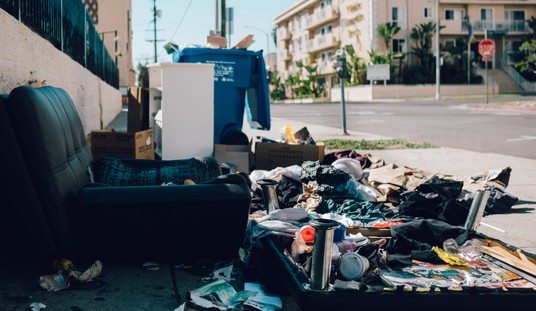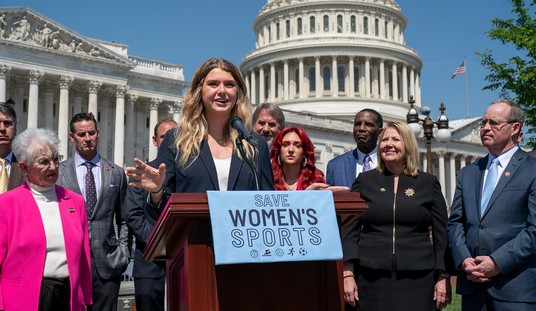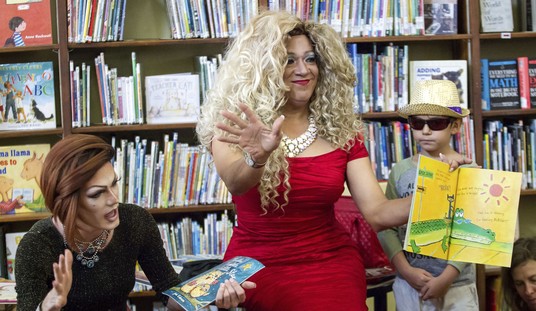
Meet ‘Scabby the Rat.’ Over the last 20 years, Scabby and his fellow inflatable rodents have become icons in the world of union protests. With their big, beady red and rubber fangs, unions have found Scabby to be a reliable symbol to protest the use of non-union labor on construction projects. As Scabby’s popularity has grown, the inflatable balloons have begun appearing in other types of labor disputes as well. However, Scabby’s mainstay has been (and remains) protesting the use of non-union labor—the rat being the symbol of the non-union worker and his employer.
Earlier this week, the National Labor Relations Board issued a decision that, while not unexpected given the NLRB’s union extremism, gives unions the unfettered right to display Scabby the Rat and other forms of “banners” (such as a faux coffin and a costumed Grim Reaper) in front of a company with whom the union has a dispute.
More importantly, however, the NLRB’s decision also affirms unions’ ability to use Scabby the Rat in front of a company’s suppliers and customers’ businesses too.
An example of such an incident occurred last year when the Carpenters’ union put up a “shame” banner in front of an ice cream store owned by Navy veteran Greg Steinberger. Steinberger, the owner of Doc Burnstein’s Ice Cream Lab was planning to expand to a mall that was using a non-union drywall company.
The union bannered Doc Burnstein’s for nine months. Luckily for Steinberger, his customers stood by he and his ice cream, even going so far as to protest the union.
“I told one of them, ‘If you’re not going to hell, I don’t know who is,’ ” Lynette Navarro said. “Imagine hurting an ice cream guy whose crime is daring to sign a lease at the mall!”
[snip]
After the bannering began, irate customers wanted to mount a counter-protest. Steinberger said he consented only because the union action continued through one of his bimonthly blood drives.
“That just really ticked me off,” said Steinberger, who offers a pint of ice cream to every blood donor.
Many companies that are the victims of union bannering are not as lucky. But, of course, the union lawyers at the National Labor Relations Board could care less if small businesses are driven out of business.
In their press release (see full decision here), the union lawyers at the NLRB justified their decision by stating:
The National Labor Relations Act prohibits conduct found to “threaten, coerce, or restrain” a secondary employer not directly involved in a primary labor dispute, if the object of that conduct is to cause the secondary to cease doing business with the primary employer. Under existing precedent, picketing that seeks a consumer boycott of a secondary is usually coercive and therefore unlawful, whereas stationary handbilling with that same object is not, and is therefore protected speech. The question before the Board was where the use of a 16-foot-tall inflatable rat balloon falls on that continuum.
The Board majority – Chairman Wilma B. Liebman and Members Craig Becker and Mark Pearce – found that the balloon display did not involve any confrontational conduct, unlike picketing. Nor was the display coercive in other ways, the majority found. It observed that the union agents involved in the display did not move, shout, impede access, or otherwise interfere with the hospital’s operations. Rather, the “rat balloon itself was symbolic speech. It certainly drew attention to the Union’s grievance and cast aspersions on [the contractor], but we perceive nothing in the location, size or features of the balloon that were likely to frighten those entering the hospital, disturb patients or their families, or otherwise interfere with the business of the hospital.”
In his dissent, the lone Republican on the NLRB made the following historical argument:
Section 1 of the Act declares the national labor policy of eliminating obstructions to commerce caused by labor disputes. The Wagner Act sought to achieve that purpose without imposing any restraint on unions’ use of economic pressure to achieve secondary objectives. This arrangement proved unworkable, and so Congress added the Taft-Hartley amendments in 1947. Those amendments, which were a response, in part, to abuses of union power, brought needed balance to American labor relations and needed protection to neutral employers, their employees, and customers.
Section 8(b)(4)(ii)(B) deprived unions of a substantial weapon. No longer could they further their cause in a dispute with a primary employer by picketing “‘to persuade customers of a secondary employer to cease trading with him in order to force him to cease dealing with, or to put pressure upon the primary employer.’ Such picketing spreads labor discord by coercing a neutral party to join the fray.”
Today, the majority puts that neutral party right back into the fray. Ignoring decades of precedent establishing that bannering is coercive, our colleagues hold that it is mere persuasion and thus lawful.
While the uncertainty over this issue has been lingering for a few years, as noted above, it was not unexpected. The NLRB’s full-fledged union activism has already been revealed in previous cases and will likely continue unless Congress actually does something to stop it.
In the meantime, there is one company owner who is probably thrilled with the NLRB’s decision. That is, Mike O’Connor, owner of Big Sky Balloons & Searchlights in Plainfield, Illinois. Mike is Scabby the Rat’s maker.
Ironically, Big Sky Balloons, the maker of the unions’ now famous rodent, is a non-union company.
_________________
“I bring reason to your ears, and, in language as plain as ABC, hold up truth to your eyes.” Thomas Paine, December 23, 1776
















Join the conversation as a VIP Member